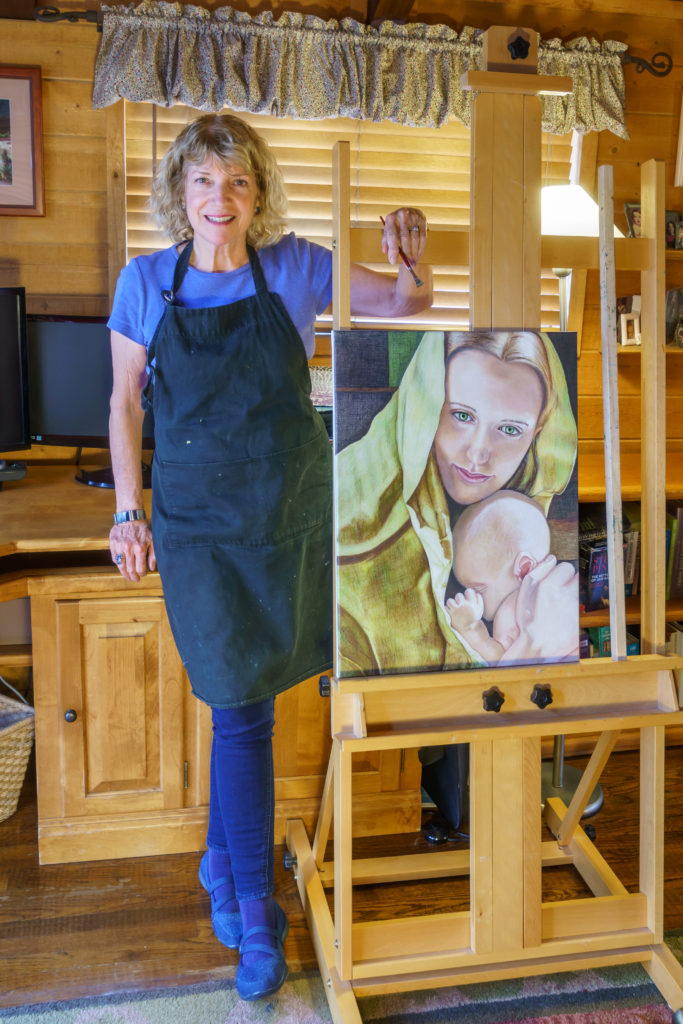
I haven’t yet given up on a painting, once I have started it. Yet it isn’t at all uncommon for me to abandon a painting, partway through working on it, and not return to it for a year or more. Luckily, I’m careful when I select a subject matter, so I don’t tend to lose interest in the topic of my painting. Yet, with many of my pieces, I reach a point where I’m not satisfied with what I have produced and feel frustrated about how to get myself through the impasse. I routinely feel stuck, knowing something in my painting isn’t working, but unable to fix it. I think I am trying to produce an effect that is above my skill level. I’m still learning. For me, painting isn’t so much play as it is challenging work. However, the result is deeply satisfying.
I spend at least 20 hours and as many as 50 hours on a painting, so I also am susceptible to becoming tired of them. Sometimes, I let them dry and then hide them from sight in my studio, so I can look at them afresh later.
The portrait painting method I’m currently studying doesn’t allow for this tactic, however. Each painting must be completed before it dries. There are many strategies employed for keeping the painting wet, so that it can be worked on for months. However, I had to make an exception to this practice when one of my portrait paintings, not quite dry or even completed, was accepted for a show. I rushed to finish it, even though I knew that by continuing to work on it, I made it more wet. I used a space heater to encourage the painting to dry. A month later, when I had it back from the show, I wanted to rework it, dry as it was, because I felt I hadn’t entirely captured the loveliness of my subject. I think I did substantially improve it, but still…it doesn’t quite do her justice. Hmm. Shall I give it another try?
There are times when I revisit “completed” paintings, because I’m continually learning new painting techniques, and I see things that bother me in these older pieces. This is a weird experience, because some of these paintings are on a cotton canvas, whereas I currently paint on boards that are completely free of texture or pliability. I have two sets of brushes—those meant to forcibly move paint across the normal texture of a cotton or linen canvas, and the delicate, natural-hair brushes I use for portraits on a texture-free board. I have tried a few plein air landscapes on a smooth board, with my portrait brushes and oil-infused paints, and realized that I even like these tools for that sort of painting. An unexpected yet charming aspect to using clove oil (a drying retardant) as an additive to my oil paints, is that when plein air painting, I often attract bees to my palette.
What about you? Do you relate to this struggle with unfinished pieces of art? If so, how do you cope with them? What causes you to abandon a painting? Do you usually get back to those pieces and finish them? Where do you store them in the meantime? Do some of your pieces get painted over or tossed out? Cezanne, and other famous artists destroyed many of their paintings that they thought did not reflect well on their ability, so if you have done that you are in good company.
Leave a Reply